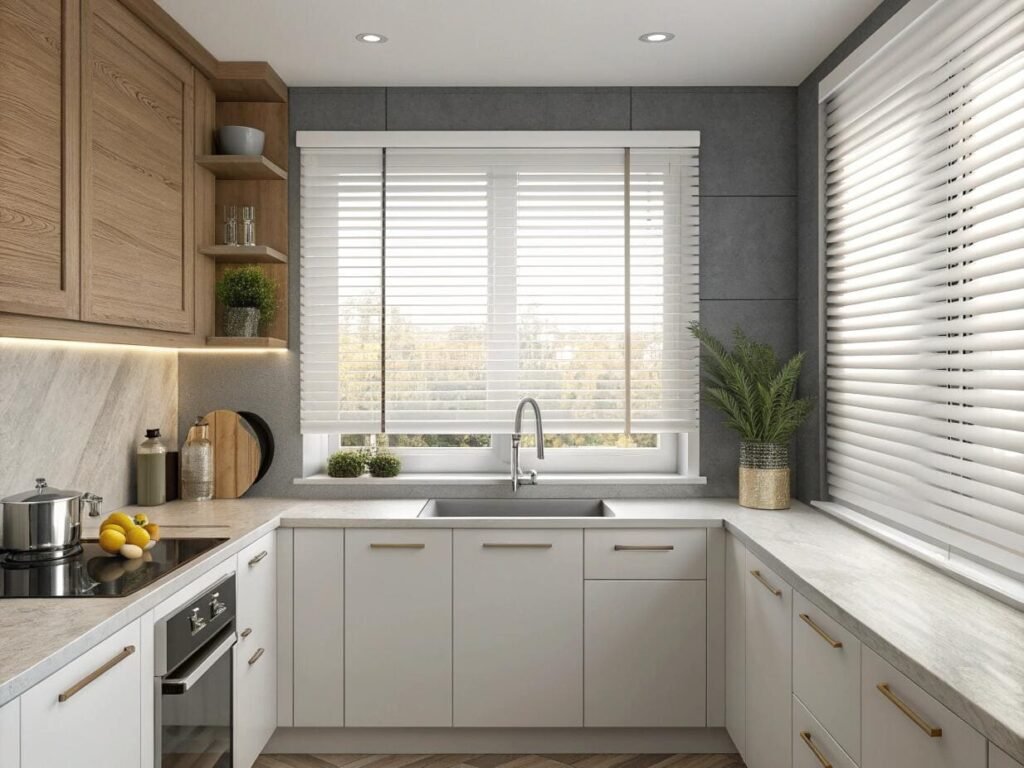Choosing the wrong blind material can ruin a project. The blinds might warp, fade, or break, leading to client complaints and reflecting poorly on your professional judgment.
The best material is always chosen based on the room’s function. Prioritize moisture-resistant materials[^1] like faux wood for bathrooms, blackout fabrics for bedrooms, and elegant, light-filtering options like real wood or fabric for living areas.

As a provider of window solutions to project contractors and designers like Emma, I’ve seen firsthand how foundational the material choice is. It’s the decision that impacts everything else: the aesthetic, the durability[^2], the maintenance schedule, and the client’s long-term satisfaction. Getting it right isn’t about knowing a single "best" material, but about following a clear process to find the perfect fit for every unique space. Let’s walk through that process.
What is the step-by-step process for choosing the right blind material?
You’re facing a wall of material options. Making a quick decision feels like a gamble, and a wrong choice could mean project delays, budget overruns, and unhappy clients.
Follow a simple three-step process: First, assess the room’s environmental conditions. Second, define the functional priorities like privacy[^3] and light control. Third, match these specific needs to the perfect material.
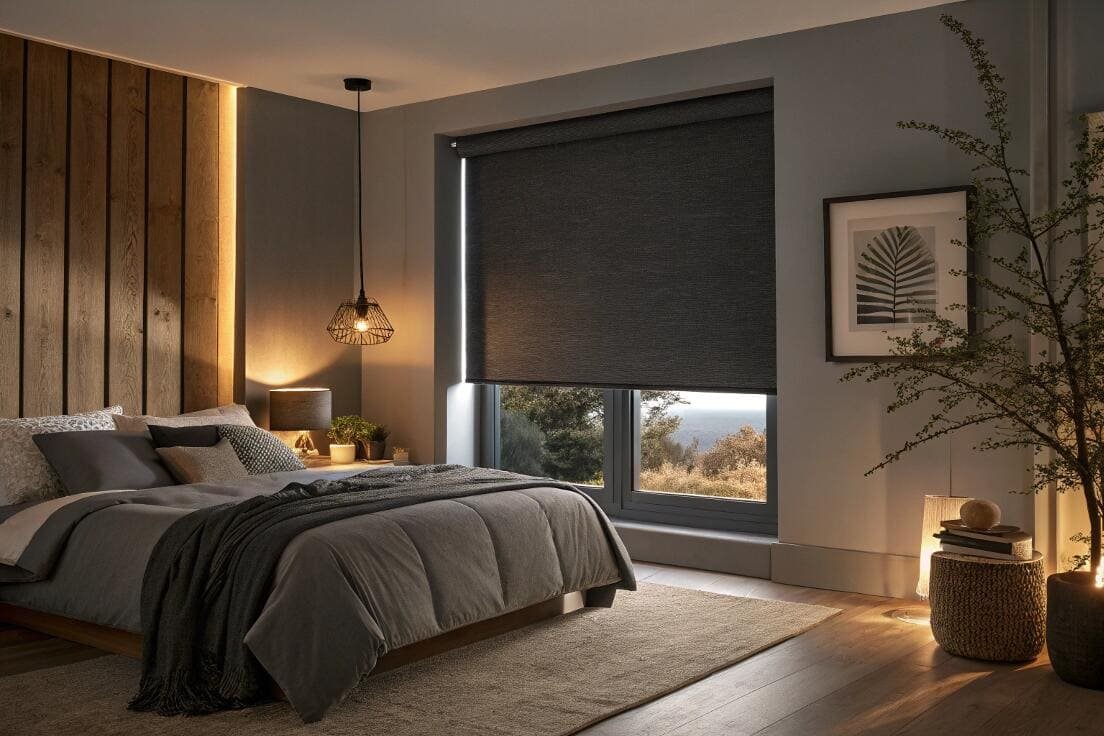
To avoid being overwhelmed, I always break the decision down into logical steps. This turns a complicated choice into a simple checklist, ensuring no detail is overlooked. What you need to know before buying boils down to this:
- Assess the Environment: Where will the blinds be installed? A steamy bathroom has completely different needs than a dry, sunny living room. High-traffic areas require more durable materials than a formal dining room.
- Define Priorities: What is the number one job for this blind? Is it blocking all light for sleep? Is it providing privacy while letting natural light filter in? Is it reducing glare on a computer screen? Or is the main priority a specific aesthetic look?
- Match to a Material: Once you know the conditions and the priorities, you can easily match them to a material’s known strengths. Faux wood for moisture, cellular shades for insulation, solar shades for glare reduction—the solution becomes clear.
Are fabric or vinyl blinds better?
You’re trying to decide between the warm, textured look of fabric and the hard-wearing practicality of vinyl. They offer such different benefits that choosing feels like a compromise on either style or function.
Fabric blinds excel in aesthetics, offering softness, color, and texture. Vinyl blinds are the champions of durability and moisture resistance, making them a practical choice for demanding environments and incredibly easy to clean.

This is a very common question, and the answer lies in the room’s primary use. One isn’t better than the other; they are simply specialized for different tasks.
- Fabric Blinds (Roller, Roman, Cellular): The biggest advantage of fabric is its versatility in style. You can find any color, pattern, or texture imaginable. They bring a softness and warmth to a room that hard materials can’t. They also offer a wide range of opacities, from sheer materials that gently filter light to multi-layered blackout fabrics perfect for bedrooms.
- Vinyl (PVC) Blinds: Vinyl is all about performance. It’s tough, inexpensive, and incredibly easy to maintain—you can just wipe it clean. Its main super-power is that it’s completely waterproof, so it will never warp, crack, or grow mildew in high-humidity areas like bathrooms, kitchens, or laundry rooms. While less decorative than fabric, vinyl provides excellent privacy and room darkening.
What is the difference between composite and faux wood blinds?
The terms "faux wood[^4]" and "composite" are often used together, creating confusion. You need to know if there’s a real performance difference or if it’s just marketing language before you specify one for a project.
Faux wood blinds are made from 100% synthetic PVC material. Composite blinds are made from a blend of wood fibers and polymers, creating a solid core that is then coated or wrapped for protection.
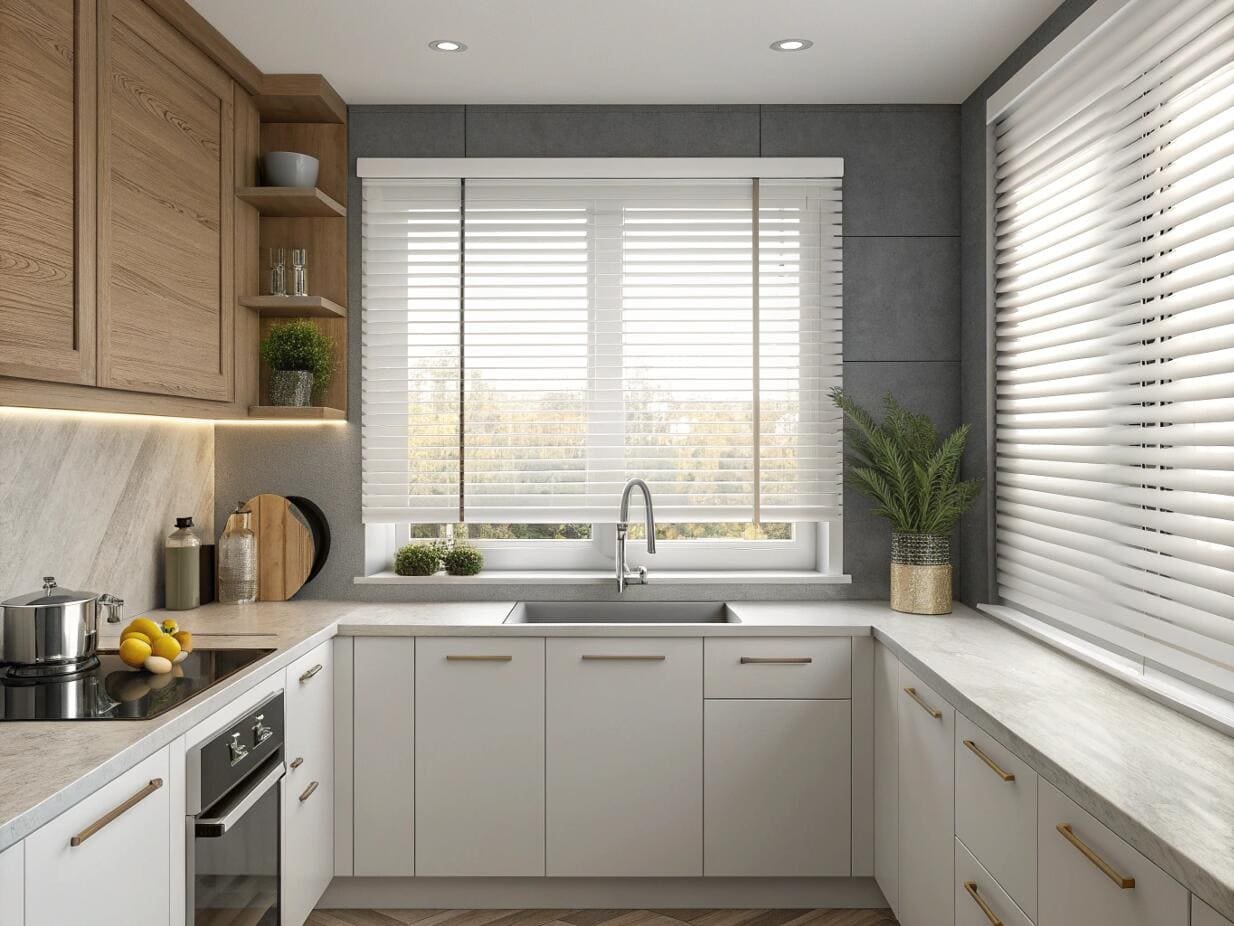
While both materials are designed as durable, moisture-resistant alternatives to real wood, their internal construction is different. Think of it this way:
- Faux Wood Blinds: These are essentially a specialized form of vinyl blind, but extruded into the shape of a wood slat and embossed with a wood-grain texture. They are lightweight, completely waterproof, and generally the most cost-effective of the wood-alternative options.
- Composite Blinds: These have a core made of ground-up wood pulp mixed with resins and polymers. This core is then encapsulated in a protective vinyl or polymer coating. This process results in a blind slat that is often heavier and more rigid than faux wood, which some people feel gives it a more substantial, high-quality feel.
Both are excellent choices for areas where real wood would warp, like over a kitchen sink or in a humid climate. The choice often comes down to budget and the desired heft and texture of the final product.
How do materials compare on durability, maintenance, and cost?
You need to deliver long-term value for your client. The goal is to find the sweet spot between a material’s upfront cost and its ability to withstand use and abuse over many years with minimal maintenance.
For the best balance of high durability, low maintenance, and cost-effectiveness, faux wood and aluminum are top contenders. They are incredibly tough, easy to clean, and reasonably priced for their long lifespan.
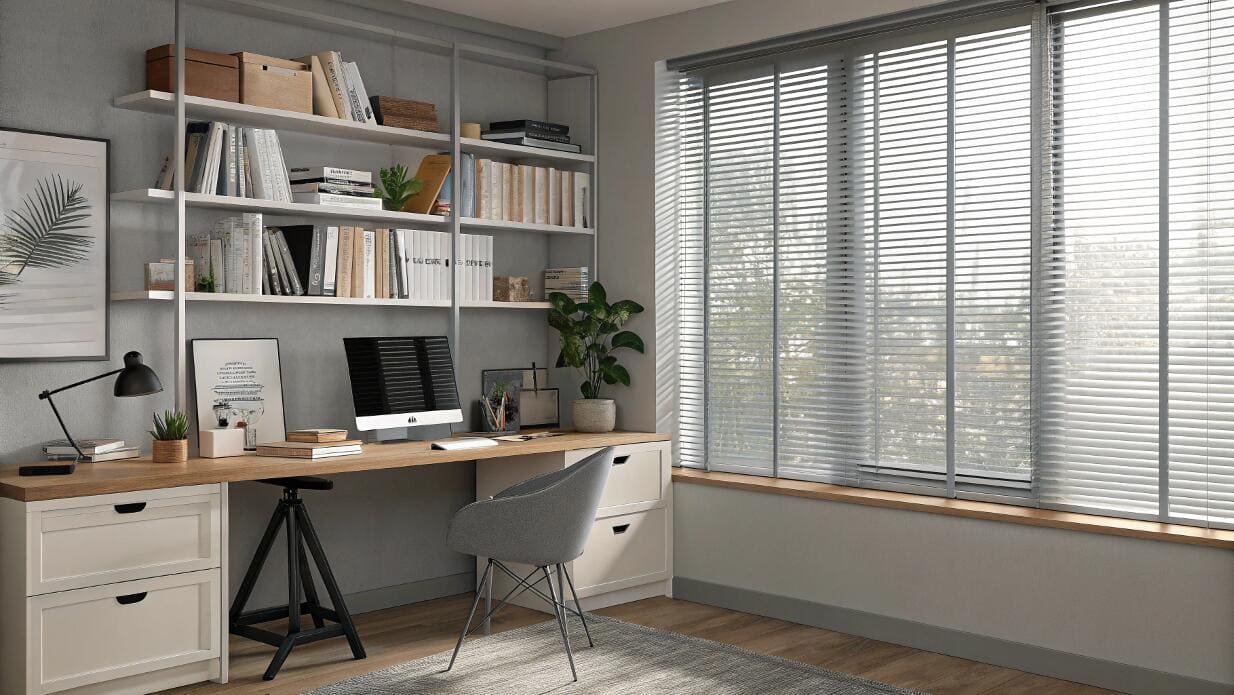
Here is a quick reference guide I use to help designers compare the long-term value of the most common materials. The most durable blinds are not always the most expensive.
| Material | Durability | Maintenance | Cost-Effectiveness |
|---|---|---|---|
| Aluminum | High: Resists bending, won’t rust | Very Low: Wipes clean | Excellent |
| Faux Wood | High: Waterproof, won’t warp | Very Low: Wipes clean | Excellent |
| Vinyl (PVC) | High: Waterproof, flexible | Very Low: Wipes clean | High |
| Real Wood | Medium: Can warp, scratch, fade | Medium: Requires careful dusting | Medium |
| Fabric | Varies: Depends on fabric type | Varies: Requires vacuuming | Varies Widely |
As you can see, if the primary concern is getting a blind that will last the longest with the least amount of fuss, aluminum and faux wood are the clear winners. They are workhorses built for performance.
What type of window blinds are popular now?
You want to ensure your design choices are current and desirable. Specifying a blind style that feels contemporary and aligns with modern lifestyles is key to a successful project.
The most popular trends are minimalist aesthetics, natural textures, and smart home integration. Clean-lined roller shades, warm faux wood blinds, and fully motorized systems are what clients are asking for now.

While classic styles are always in fashion, the dominant trends I see right now are all about simplicity and technology.
- Smart Motorization: This is the biggest trend by far. It is no longer a niche luxury; it’s an expected feature in mid- to high-end projects. The ability to control all blinds with a remote, an app, or a voice command via Alexa or Google Home provides a huge amount of convenience and a clean, cord-free look.
- Minimalist Designs: Clean, simple lines are in. This is why roller shades and solar shades have become so popular. They have a very small stack when rolled up, maximizing the view, and offer a clean, uncluttered look that complements modern architecture.
- Natural and Warm Textures: To balance out minimalist design, there’s a strong desire for natural textures. This is where high-quality faux wood blinds and woven fabric shades shine. They bring warmth and an organic feel to a room without sacrificing performance.
How do I match blind materials to specific room functions?
A blind that works perfectly in one room can be a complete failure in another. You need to be certain that the material you choose is perfectly suited to the unique demands of each space.
Systematically match materials to each room’s conditions. Install moisture-proof faux wood or vinyl in bathrooms. Use blackout cellular or roller shades in bedrooms. Choose elegant, light-filtering fabrics or woods for living spaces.
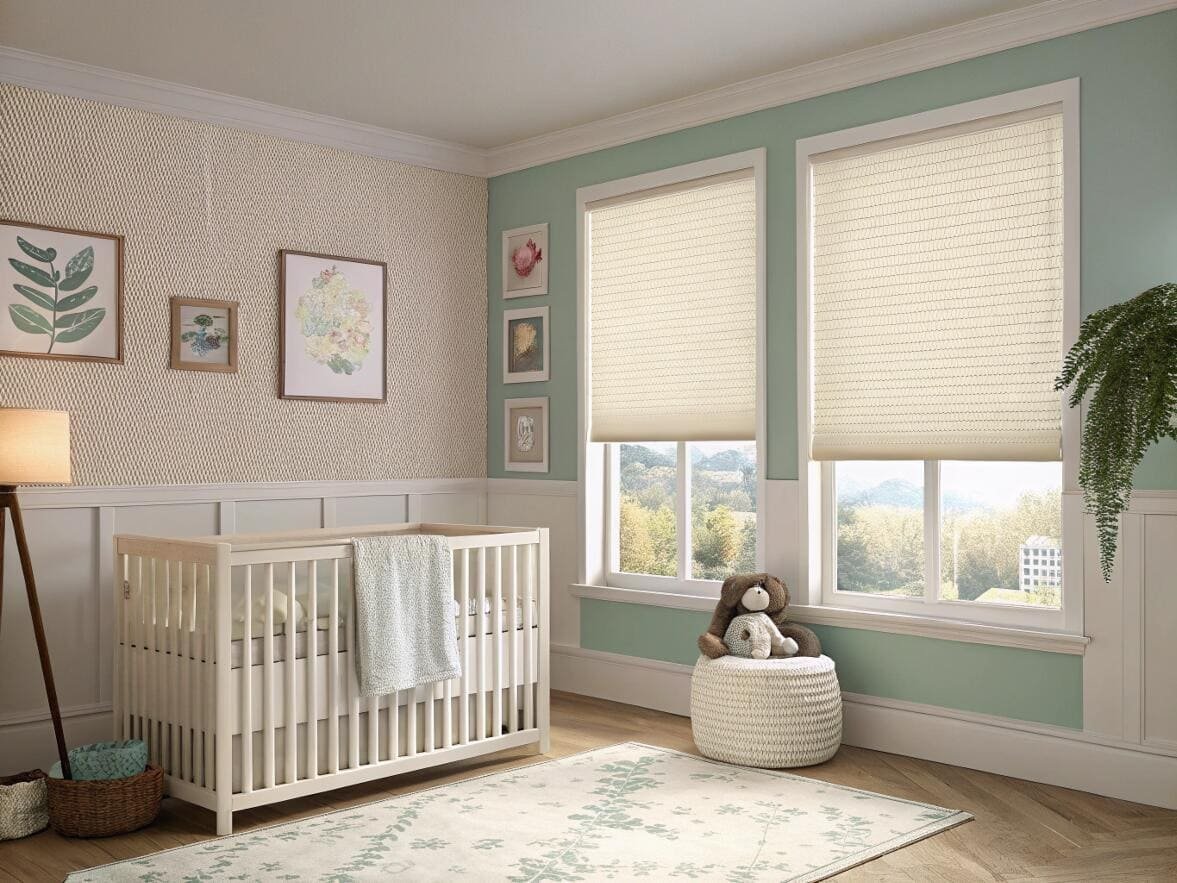
This is how I decide what kind of blinds to get. Let’s put it all together in a simple room-by-room guide:
- For Bathrooms and Kitchens: The environment is humid and requires frequent cleaning.
- Best Choices: Faux Wood, Vinyl, or Aluminum Blinds.
- Why: They are waterproof, won’t warp or grow mildew, and can be wiped clean easily.
- For Bedrooms: The priorities are privacy and complete darkness for sleep.
- Best Choices: Blackout Cellular Shades or Blackout Roller Shades. A Faux Wood blind with a "no-holes" privacy routing is also a great option.
- Why: These materials are specifically designed to block the maximum amount of light.
- For Living Rooms and Dining Rooms: The priorities are aesthetic[^5]s and controlling light while maintaining a welcoming atmosphere.
- Best Choices: Real Wood Blinds, Fabric Roman Shades, or Light-Filtering Roller Shades.
- Why: These materials offer a high-end, decorative look and can be adjusted to let in soft, natural light.
Conclusion
Choosing the right blind material is simple when you follow a logical process. By matching the unique environmental and functional needs of each room to a material’s strengths, you ensure a perfect result for every project.
---
[^1]: Explore this link to discover top moisture-resistant materials that ensure durability and longevity in humid environments.
[^2]: Explore a comparison of blind materials to find the most durable options for your needs.
[^3]: Find out which blinds are best for ensuring privacy while maintaining a stylish look.
[^4]: Discover the benefits of faux wood blinds, including their moisture resistance and aesthetic appeal.
[^5]: Learn why aesthetic considerations are crucial in selecting the right blinds for your space.Partner with VelaBlinds for Your Next Project
Smart window treatments shouldn’t be complicated. After working with 500+ distributors and contractors worldwide, I’ve streamlined the process to get you quality products, competitive pricing, and reliable support – every time.
Why project professionals choose VelaBlinds:
- ✅ Fast, Accurate Quotes – Detailed specs and pricing within 24 hours
- ✅ Transparent Pricing – No hidden fees, volume discounts clearly outlined
- ✅ Quality Assurance – Direct partnerships with certified OEM manufacturers
- ✅ Project Support – Dedicated account manager from quote to delivery
Start your next project:
📧 Quick Quote: Send your requirements to info@velablinds.com
📱 Direct Contact: WhatsApp +86 137 2012 8317
🌐 Browse Solutions: https://velablinds.com/
📁 Product Resources: Access spec sheets, catalogs & project files
Paul Chen, Founder
"I built VelaBlinds to solve the real challenges I faced as a project buyer – long lead times, unclear specs, and unreliable suppliers. Let’s discuss how we can power your projects with smarter blinds."
Serving distributors and contractors across North America, Europe, and Australia since 2018.

